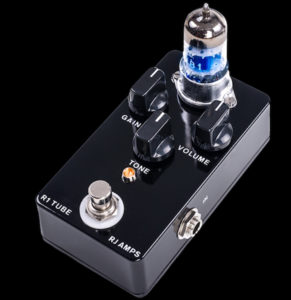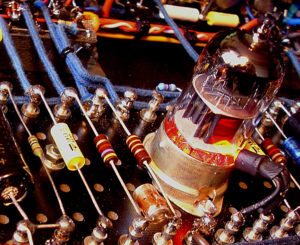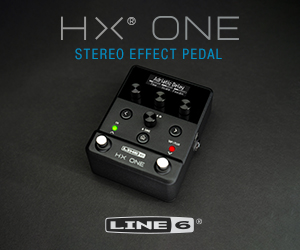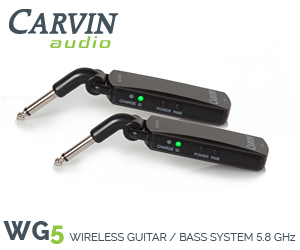Are pedals with tubes the same as tube preamps?
Brian Rois | May 19, 2018 | Comments 0
Are pedals with tubes the same as tube preamps?

For the most part, yes! But let’s look behind the scenes to see what is going on internally.
First, what is preamp?
If we look at a guitar amplifier, we see 3 distinct sections: the preamp, the phase inverter/ splitter, and the power amplifier.
The preamplifier is usually comprised of gain stages built around the 12A_7 dual triodes or small-signal pentodes such as the EF86. The job of these stages is to amplify the puny signal coming from the guitar to a level that ensures the power amplifier has a large enough input signal to reach its maximum rated output power. Hence the term “pre-amp”.
It generally takes only 1 or 2 tubes to do this, but this would only give us a clean to mild overdriven sound. If we wanted heavy overdrive or insane levels of gain and distortion, we are going to need more preamp tubes.
The job of these extra tubes is to amplify the guitar signal so much that the signal exceeds the following tube’s signal handling abilities which causes distortion.
In order to provide power to a tube preamp, we need at minimum two power supplies: one for the high voltage required by the tube plates, and one 6.3/12.6V for the tube heaters.
Now, looking at pedals with tubes, we see the exact same elements as we do in tube preamplifiers. There are preamp tubes with their associated audio circuitry, a high voltage power supply for the tube plates, and a 6.3/12.6V supply for the heaters. We could literally take a tube pedal’s guts out and install them in a rack chassis and we could get by with calling it a tube preamp…because it is a tube preamp.
Putting a tube circuit in a pedal is no trivial task however.

The biggest issue is that preamp tubes like the 12AX7 require much more power than the usual solid-state circuitry commonly found in guitar pedals. You’re definitely not going to power this with a 9V battery.
This is tricky because in a pedal we don’t have room for a large transformer and large high-voltage capacitors for the power supplies like we do in standalone tube preamps (although, some tube pedals are built this way). And it’s definitely not safe to have a wall-wart delivering 150-300V to the pedal through a barrel plug!
So most tube pedals use a standard 12V wall adapter. This will power the tube heaters directly, and for the B+ we can use either voltage multiplier circuits or special IC’s (boost regulators) that can boost the 12V into something much higher.
This will provide a fully functioning tube preamp in a pedal.
The issue with this is that the power supplies in tube circuitry can and do affect the overall tone. A well-designed transformer-based linear power supply will out-perform a wall-wart based supply in spades, especially when powering the exact same preamp circuit!
The smaller power supplies used in pedals will have less opportunity to filter out noise since there’s less room for large capacitors to shunt noise and smooth any supply ripple. Power supply noise can be an even bigger issue with switching boost regulators. These circuits operate at high frequencies, which tend to couple noise to unwanted place easier than low frequencies!
The small size also means there is more likelihood that all of the tubes in a pedal are powered from the same node which increases the chances of encountering unpleasant side-effects like motor-boating and ghost notes.
How obvious this is tonally to the end-user, however, depends on a large number of factors; the most important is how well designed the circuit is to begin with! A well-designed tube pedal will sound and behave like a well-designed tube pedal.
Another difference with tube pedals compared to tube preamps is in the complexity and capability/features. Again, this comes down to the space available in the pedal format. It’s highly unlikely we are going to see 3 and 4-channel pedal preamps, each with their own 3-band EQ. It is possible to do for sure, but you are more like to see tube pedal circuits implemented to function more like an overdrive/distortion pedal than a full-fledged preamp.
So to recap, pedals with tubes are tube preamps — but they typically use different power supply circuits that are smaller and potentially noisier, and will be less flexible/complex than traditional tube preamps.
The one exception to my answer are “starved plate” tube pedals. Starved plate designs use tubes, but rather than power them from the usual 150V-400V, they use much smaller voltages in the 9V-50V range.
Starved plate tube pedals usually use different circuits than normal tube preamps. Their performance, while kind of tube-like, generally sounds closer to solid state than it does a properly fed tube circuit.
This doesn’t mean they can’t sound good however, just that these starved plate pedals with tubes are NOT the same as tube preamps at all.
Tiny URL for this post:
Filed Under: Featured • Commentary / Editorials
About the Author: Brian Rois is the brainiac behind Analog Amp Modeling. He is the founder and product designer at Black Widow Audio Designs and loves to talk gear with anyone. When not designing, he can be found making his world famous artisanal pizza, which is only world famous because family in England thinks “it’s OK”.




















